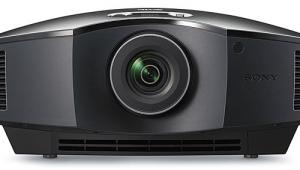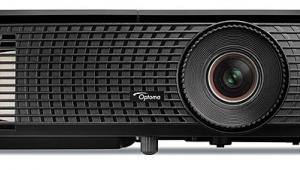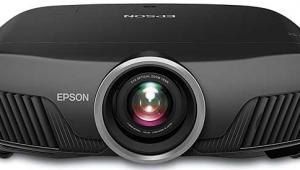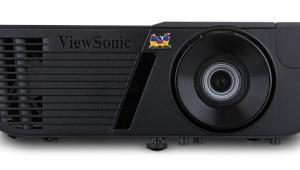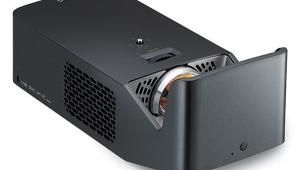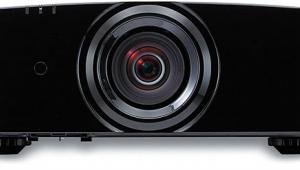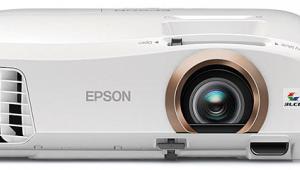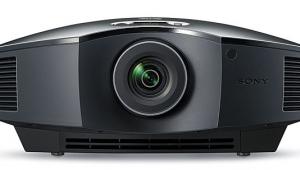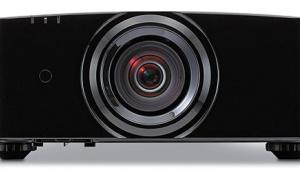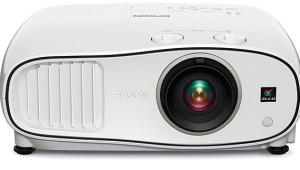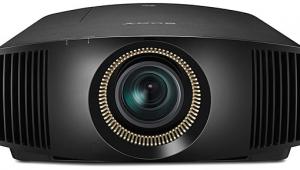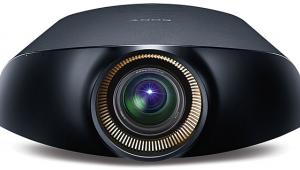Epson PowerLite Home Cinema 5020UBe 3D LCD Projector HT Labs Measures
Full-On/Full-Off Contrast Ratio: 7,910:1
All the measurements here, unless noted otherwise, were taken in 2D on a 96-inch-wide, 16:9, Stewart StudioTek 130 G3 screen (gain 1.3), with the projector in its THX color mode, calibrated and adjusted for the most accurate image. The power consumption (lamp mode) was on Eco, the gamma at 2.3, and the Auto Iris engaged set to Normal.
The Epson’s full-on/full-off contrast ratio is good, though not quite up to the level of the best of the (somewhat) more expensive competition from JVC and Sony. The contrast ratio above was measured with the projector’s contrast control set to –10 and the brightness control set to +1, which produced a peak white level of 21.1 foot-lamberts. The black level at these settings was 0.0027 ft-L. Reducing the peak white output to 16 ft-L (by reducing the contrast control to –18) decreased the full-on/full-off contrast ratio to 5,918:1, with the black level essentially unchanged.
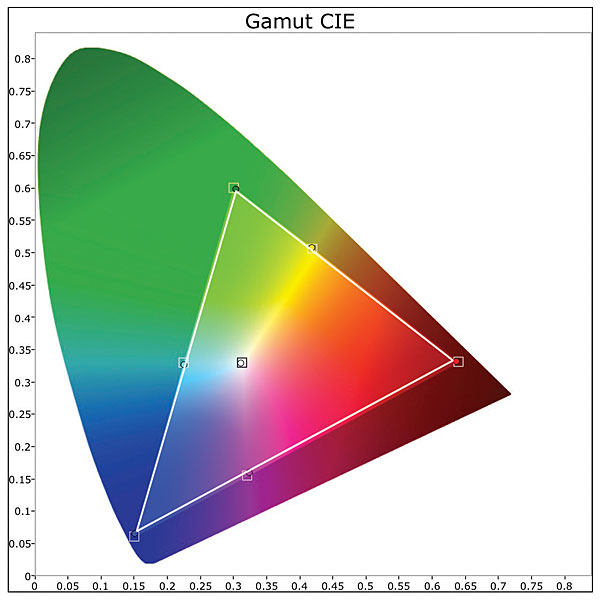
Delta E is a figure of merit that indicates how closely a display adheres to the D65 HD color standard (Rec. 709). Generally, a Delta E under 3.0 (some experts say 4.0) indicates a deviation from ideal that is imperceptible to the eye. The RGB Color Balance charts show graphically how well the projector adheres to this standard; the tighter the match of the three primary colors, the nearer the result is to D65.

Color-tracking charts were generated in SpectraCal CalMAN, www.SpectraCal.com
The pre-calibration THX mode was reasonably accurate up to 70 percent of peak brightness, its gray-scale Delta E remaining below 2.87 up to that level but increasing steadily from there, reaching 8.9 at 100 percent. Post calibration, the gray-scale Delta E remained below 1.78 to 90 percent, increasing to 4.44 at 100 percent. The color Delta E, post calibration, remained below 1.76 for all colors. The RGBCMY (color management) controls were useful in achieving these results.
At just under 200 hours on the lamp, and after most of the measurements and viewing were complete, another run showed a measurable shift in the white balance results. But they remained within an acceptable range. This shift was accompanied by a noticeable pink tint on white level clipping test patterns above a white level of approximately 230 at the contrast setting of –10 (in Eco lamp mode). This was not visible on normal program material, and it disappeared when the contrast setting was reduced to –14 or lower. At –14, the peak white level was still an impressive 18.4 ft-L.
At a Gamma setting of 2.3, the 2D gamma averaged 2.17 (minimum 2.11, maximum 2.25).
A calibration in the THX 3D mode produced respectable Delta E numbers, but the subjective brightness was judged inadequate on our modest-gain 96-inch screen. The 3D Dynamic Color Mode was ultimately chosen for 3D viewing. Its limitations—clipping in the brightest whites (only occasionally visible on normal material), far from correct color (unlikely to put off the average viewer), and very low (and non-linear) gamma—defeated attempts at a good calibration, although it produced a satisfyingly bright 3D experience.—TJN

